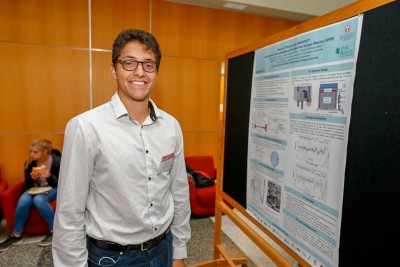Abstract
Neutrino Physics with Prospect Background Characterization at the High Flux Isotope Reactor (HFIR)
 Student: Diego Venegas Vargas
Student: Diego Venegas Vargas
Faculty Mentor: Alfredo Galindo-Urribari (Oak Ridge National Laboratory, Physics Division)
A neutrino is one of the many fundamental particles of nature that make up most of the visible matter in the universe. Neutrinos are often referred to as “ghost” particles given that they might be the most elusive particles of all since they can pass through solid objects. Neutrinos have a fascinating property which is known as an oscillation. This corresponds to the change in “flavor” of a neutrino as it travels through space. Today, three neutrino flavors are known (electron, muon and tau) which are part of the Standard Model of physics. The PROSPECT experiment will attempt to search for a new type of neutrino oscillation known as a sterile neutrino, which would invoke significant changes in the standard model along with our understanding of fundamental physics.
The Precision Reactor Oscillation and Spectrum Experiment (PROSPECT) is a neutrino experiment at short baselines that aims to search for the existence of sterile neutrinos and precisely measure the energy spectrum of antineutrinos emitted from the Oak Ridge National Laboratory's High Flux Isotope Reactor (HFIR). A complete characterization of background sources present throughout the course of the experiment is required to obtain a proper understanding of the reactor’s response, as well as to investigate the variation of background during operation periods. The PROSPECT detector has been collecting data since March 16th of the present year. This study presents data obtained through measurements and simulations of the background sources at HFIR, along with preliminary results of the detector’s performance. A brief overview of the detector’s status and main physics goals are presented.
